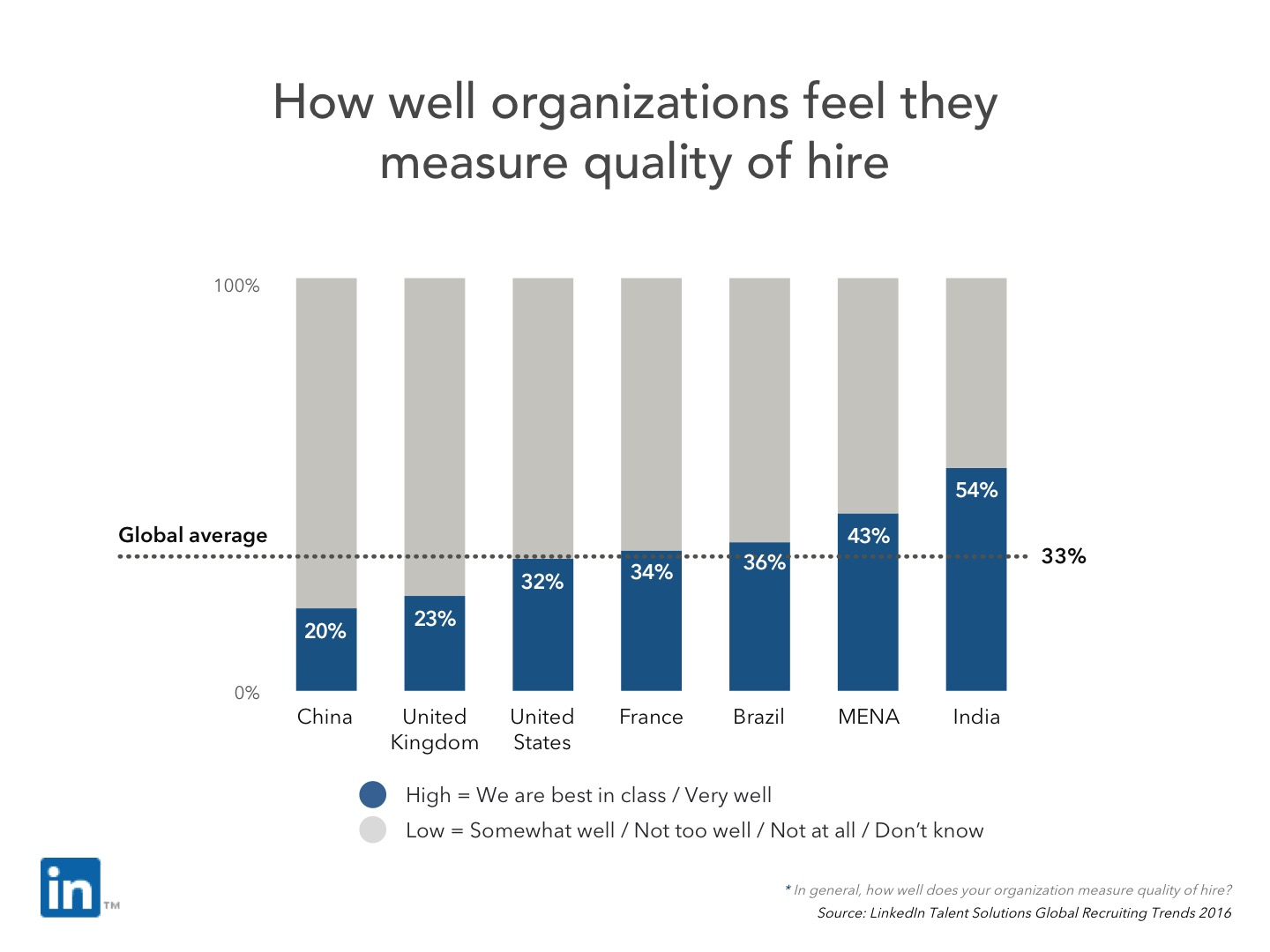Recruitment is a curious industry that is equal parts science and art. The ability to manage relationships, negotiate offers, and manage expectations is where emotional intelligence is crucial. These are factors in the recruitment process that cannot be automated nor enhanced with technology to any significant degree. Conversely, there is a great advantage to setting a process and automating operations to the Nth degree for the sake of efficiency. Somewhere in the middle of all that alchemy is a burning question that is often overlooked, did we hire the right person for the job?
Often, recruitment metrics are the topic among talent acquisition managers, the pain points center around speed. How quickly can a qualified candidate be identified, interviewed, and hired into a role? The resolution to this tends to be how proactive your recruitment organization is. If candidates are engaged from an exploratory perspective, and it becomes known what opportunities would interest them, then the time to fill would be greatly reduced. Be that as it may, many organizations are reactive with attention to current needs alone. Another component of recruiting that is not tracked often enough is the delay caused by unrealistic job requirements.
I presume it is not the intention of hiring managers to prolong the hires they purport to need but ambiguity on their part often hinders the hiring process. For example, constantly changing the job requirement causes recruiters to waste their time, the candidate’s time and damages the employer brand of the company. It suggests that the hiring manager really does not know what they are looking for and if so, is the need to hire someone for the role truly legitimate? An equally frustrating direction of some hiring managers is to relentlessly pursue “perfect” candidates while simultaneously dismissing qualified candidates. These are but a few examples of which there are many more issues that could be named. Regardless of all the things that could be tracked in the recruitment process (source of hire, interviewed candidates, offers extended, et cetera), few are as important as quality of hire. Yet, when companies are asked how well they track this metric, they give themselves a low grade.
In 2016, a LinkedIn survey proved that leaders lacked confidence in how they measured quality of hire. Only 33% of respondents felt that their methodologies were strong, and an even smaller 5% felt “best in class.” All suggesting that there is a lot of opportunity for improvement. So, what are some ways that companies can better measure the effectiveness of their hiring practices?

The Society of HR Management (SHRM) in their 2017 Talent Acquisition Benchmarking Report cited multiple HR measures for gauging the quality of hires. They also noted the trend that “...the use of 360-degree feedback scores has risen from 18% in 2015 to 28% in 2016. The overall percentage of organizations measuring quality of hire has risen from 19% in 2015 to 23% in 2016.”

Google has a simple formula for calculating cost per hire; discern what indicators you are using, divide it by the number of indicators then, multiply it by 100 to get your quality of hire score. It is not a one size fits all formula so adapt it to fit the goals of the organization.

Google gave this as an example of the formula in action.
Employee A is a salesperson at a small marketing agency. HR decides to evaluate the quality of hire for salespeople based on sales goals, 360 reviews, and hiring-manager satisfaction scores. In the first year, Employee A meets 100% of her sales targets. Her 360 reviews are very positive, showing a 92% satisfaction rate among her peers. Her hiring manager reports that he is very happy with her performance; he rates her 95/100. Quality of hire score: 95.7%

Indeed.com has a different formulation for computing quality hires. After determining the relevant indicators, they add them together, then divide them by the total number of indicators. Here is a sample count.
(Productivity + Client feedback + Training time + Engagement) / Total number of indicators = Quality of hire
By adding scores to each indicator that maxes out at 100, you could rate an employee this way:
93 (productivity score) + 87 (client feedback rating) + 65 (training time) + 76 (engagement) / 4 = 80.25 quality of hire score
I would add to this one more suggestion. Set benchmarks to be met on a quarterly basis then grade the new hire’s performance on a scale of 1-100 each quarter. By the end of the year, divide the scores by the number of quarters served for an overall average. Make sense? This is how that looks as a formal computation.
- 1st Quarter – 90% of goals met.
- 2nd Quarter – 87% of goals met.
- 3rd Quarter – 100% of goals met.
- 4th Quarter – 92% of goals met.
Overall quality of hire score: 92.25%
In the “great resignation” era, quality of hire is more important than ever before because the better you hire, the longer you are likely to retain your talent. It is simply one metric you cannot ignore. At Proactive Talent it's been our practice to support quality hires, and we have consistently proven that with our client engagements. For example, we helped Postmates increase candidate quality by 50% and we assisted UT Health with building their recruiting function and hiring 1,300+ nurses and allied health professionals shaving $2.6 million off their cost-per-hire.
All that was possible because our model does not incentivize the wrong behaviors like traditional recruitment marketing agencies and staffing firms. We work as an extension of your team helping you get the hires you need while also building the long-term strategy, process, and brand you need to increase the quality of your hires resulting in lower attrition and higher performance. We believe that when a company authentically tells its employee experience story, they attract the right talent. When they build the right process and strategy and utilize the best technology to deploy it, they create a better candidate experience and hire faster. If you’re looking for a partner that doesn’t just look at the number of applicants and hires but helps you build your internal capabilities to become a talent magnet and measure the quality of those hires, click the link below to talk to us today.




